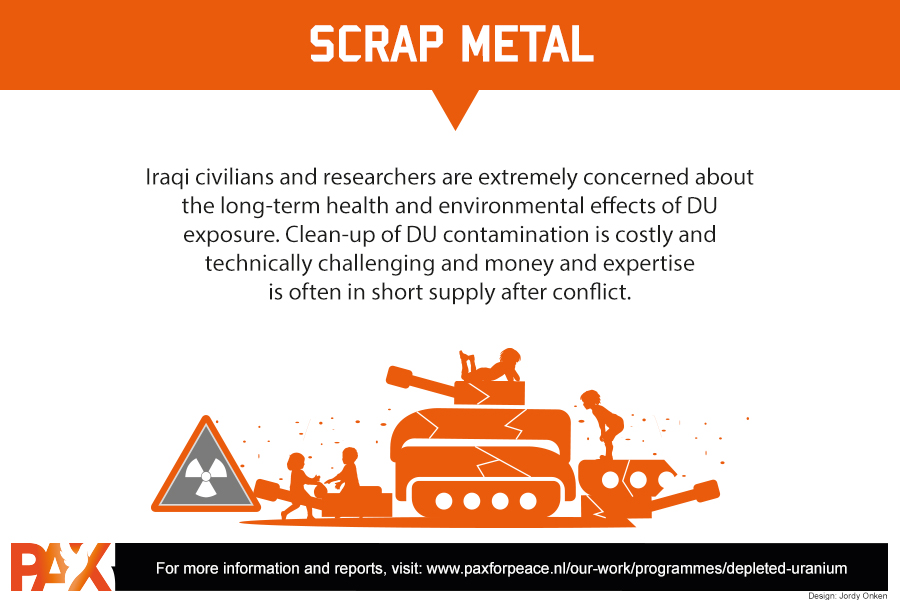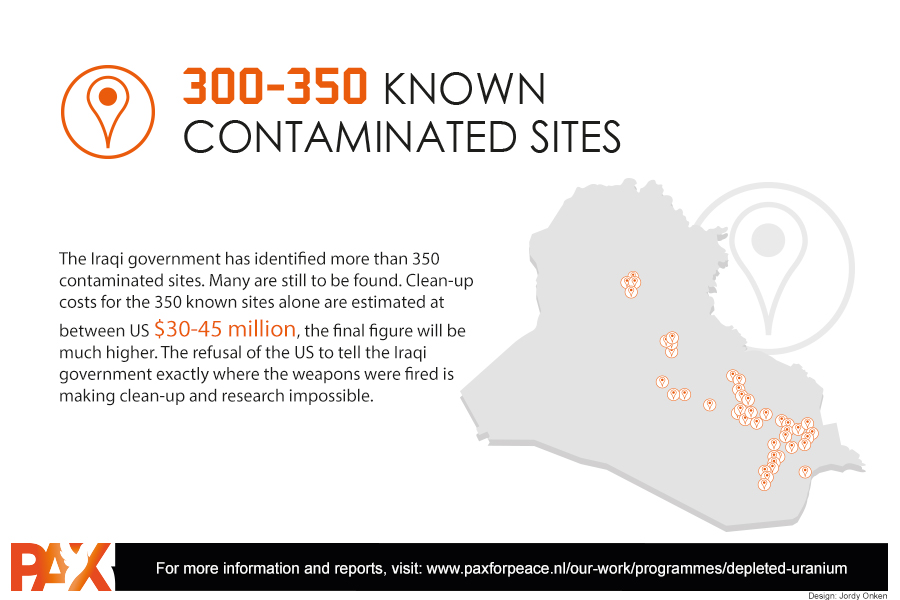 On the 31st of October, the UN First Committee voted on resolution A/C.1/69/L.43, Effects of the use of armaments and ammunitions containing depleted uranium, which passed with 143 in favour, 4 against and 26 abstainers. Before and after the vote, several States provided an explanation of vote (EOV). In some of these EOVs, especially those by the US/UK/France, Germany, and the Netherlands, allegations were made that the references to UNEP’s call for precaution by the drafters of the resolution were ‘selective and misleading’ (Germany) or ‘cherry-picking’ (US/UK/France) in the text UNEP provided to the UN in 2010. But what did UNEP actually say? And how did one part end up in the resolution and what actually happened during negotiations over resolution A/C.1/67/L.16 in 2012?
On the 31st of October, the UN First Committee voted on resolution A/C.1/69/L.43, Effects of the use of armaments and ammunitions containing depleted uranium, which passed with 143 in favour, 4 against and 26 abstainers. Before and after the vote, several States provided an explanation of vote (EOV). In some of these EOVs, especially those by the US/UK/France, Germany, and the Netherlands, allegations were made that the references to UNEP’s call for precaution by the drafters of the resolution were ‘selective and misleading’ (Germany) or ‘cherry-picking’ (US/UK/France) in the text UNEP provided to the UN in 2010. But what did UNEP actually say? And how did one part end up in the resolution and what actually happened during negotiations over resolution A/C.1/67/L.16 in 2012?
By Wim Zwijnenburg
Having been part of these negotiations, I will provide my personal account of these events and how we ended up with this selection of the quote.
In 2012, UNEP sent in their bi-annual report to the UNGA Secretary General, which contained 6 paragraphs on DU and the work of UNEP on DU. The first paragraph described what DU is, a “chemically and radiologically heavy metal”, and it describes how after use “penetrator fragments, and jackets or casings can be found lying on the surface or buried at varying depth, leading to the potential contamination of air, soil, water and vegetation from depleted uranium residue.” The 2nd paragraph describes UNEP’s work on DU in the Balkans. The 3rd paragraph describes the cooperation with the IAEA and the WHO. And than we come to the 4th paragraph, which was quoted in the UN resolution in both 2012 and 2014, which describes the outcome of UNEPs work in the Balkans (note: not Iraq and Kuwait!):
“The main scientific findings were consistent across the three assessments. Measurements taken at the depleted uranium sites showed that, even in areas with widespread depleted uranium contamination, the overall levels of radioactivity were low and within acceptable international standards, with no immediate dangers from either particle-based or waterborne toxicity. However, major scientific uncertainties persisted regarding the long-term environmental impacts of depleted uranium, particularly with respect to long-term groundwater contamination. Because of these scientific uncertainties, UNEP called for a precautionary approach to the use of depleted uranium, and recommended that action be taken to clean up and decontaminate the polluted sites. It also called for awareness-raising among local populations and future monitoring.”
 Paragraphs 5 describes UNEPs support to the Iraqi Ministry of Environment in 2005/2006 and paragraph six states that UNEP hopes her work will “help countries to address potential risks related to the contamination of air, soil, water and vegetation from the use of depleted uranium in times of conflict, and stands ready to provide further assistance upon request.
Paragraphs 5 describes UNEPs support to the Iraqi Ministry of Environment in 2005/2006 and paragraph six states that UNEP hopes her work will “help countries to address potential risks related to the contamination of air, soil, water and vegetation from the use of depleted uranium in times of conflict, and stands ready to provide further assistance upon request.
Paragraph four is what the debate is really about. The resolution from 2012 and 2014 has in it’s Preamble the following quote: “Recalling that […] majors scientific uncertainties persist regarding the long-term environmental impacts of depleted uranium, particularly with respect to long-term groundwater contamination, and calls for a precautionary approach to the used of depleted uranium”
However, it took some negotiating with several States in 2012 to get this text in. The drafters of the resolution had this quote included, but Germany objected, stating in the conversations that I had with them during that time that the quote didn’t reflect the whole text, and was selective. Now here comes the interesting part. Instead, Germany wanted to have the first part of the paragraph in, and leaving the last part out. So Germany only wanted the following text: “The main scientific findings were consistent across the three assessments. Measurements taken at the depleted uranium sites showed that, even in areas with widespread depleted uranium contamination, the overall levels of radioactivity were low and within acceptable international standards, with no immediate dangers from either particle-based or waterborne toxicity.” Which is a very selective quoting of the whole text if you ask me.
Instead, we suggested to the drafters to include the whole paragraph, including the “and recommended that action be taken to clean up and decontaminate the polluted sites. It also called for awareness-raising among local populations and future monitoring.” but this was refused. Instead, the drafters decided to go with the original text calling for a precautionary approach.
Now, is the selection of that text on the precautionary approach fair? We believe so, and because of the following reasons:
UNEP has consistently called for a precautionary approach in all its reports, whether on the Balkan wars and Iraq or in their report on the legal principles of protection of the environment in armed conflict. UNEP has consistently recommended not to deploy DU in weapons systems, because of the substance’s characteristics and environmental behaviour, the danger of exposure of civilians and the difficulties with regard to cleaning it up, as well as the scientific uncertainties due to lack of research in contaminated area. Therefore, UNEP recommends applying the precautionary principle for DU munitions, which in practice means DU should not be used.
- All IAEA member states have strict regulation policies on low and intermediate radioactive waste. DU is qualified by the IAEA as such, which means that all necessary measures should be taken to prevent civilian exposure. Precaution and protection should therefore be part of domestic policies of all IAEA member States
- The potential hazard of DU exposure is well understood by many of these states. Military personnel deployed in areas where DU was used, or suspected to be used, of states such as Germany, the Netherlands, Denmark, Belgium, the US and the UK were provided with instructions on precautionary measures to be taken to avoid exposure.
- Note that the report on the Balkans deals with a situation where a relatively low amount of DU was used (12.000kg), mostly outside of populated areas. In Iraq though, over 400.000kg of DU was fired, and a suspected significant amount was released inside densely populated areas. In addition. thousands of contaminated tanks and armoured vehicles were left behind, resulting in additional exposure risks for civilians and workers involved in scrap metal and waste disposal. Furthermore, DU munitions were left in the soil and can resurface years later, as the IAEA demonstrated in Kuwait. Altogether, the risk of civilian and environmental exposure is much higher in the case of Iraq than in the UNEP study on DU use in the Balkan wars.
Cleary, all those States giving an EOV stating the UNEP quote was selective, are a) missing the point of the UNEP quote and b) were themselves ‘cherry-picking’ during the process of drafting the text. Their current position does not respect the corroborated facts on the ground in Iraq, where contamination is demonstrated for example on contaminated scrap metal sites and where the Iraqi government is forced to spend millions of dollars on clean up efforts and on contracting specialised capacity and expertise. The same countries seem to disregard existing standards for the protection of civilians and the environment, that they would readily apply in a case of domestic DU use or if their servicemen are risking being exposed. Instead, it seems a politically inspired choice more than anything, to avoid a strong position and to avoid support for the call by affected States to provide transparency on use of DU munitions, and to provide support for the badly needed decontamination efforts.
It seems undeniable , that pressure by countries still using DU has prevailed over facts and principles, which is highly regrettable. Only a push for independent research in affected areas and transparency on the use of DU will bring the clarity so much needed in this highly politicized debate.




